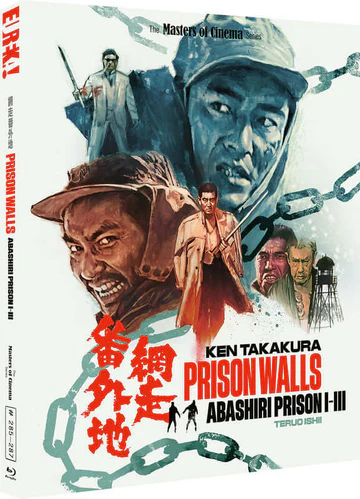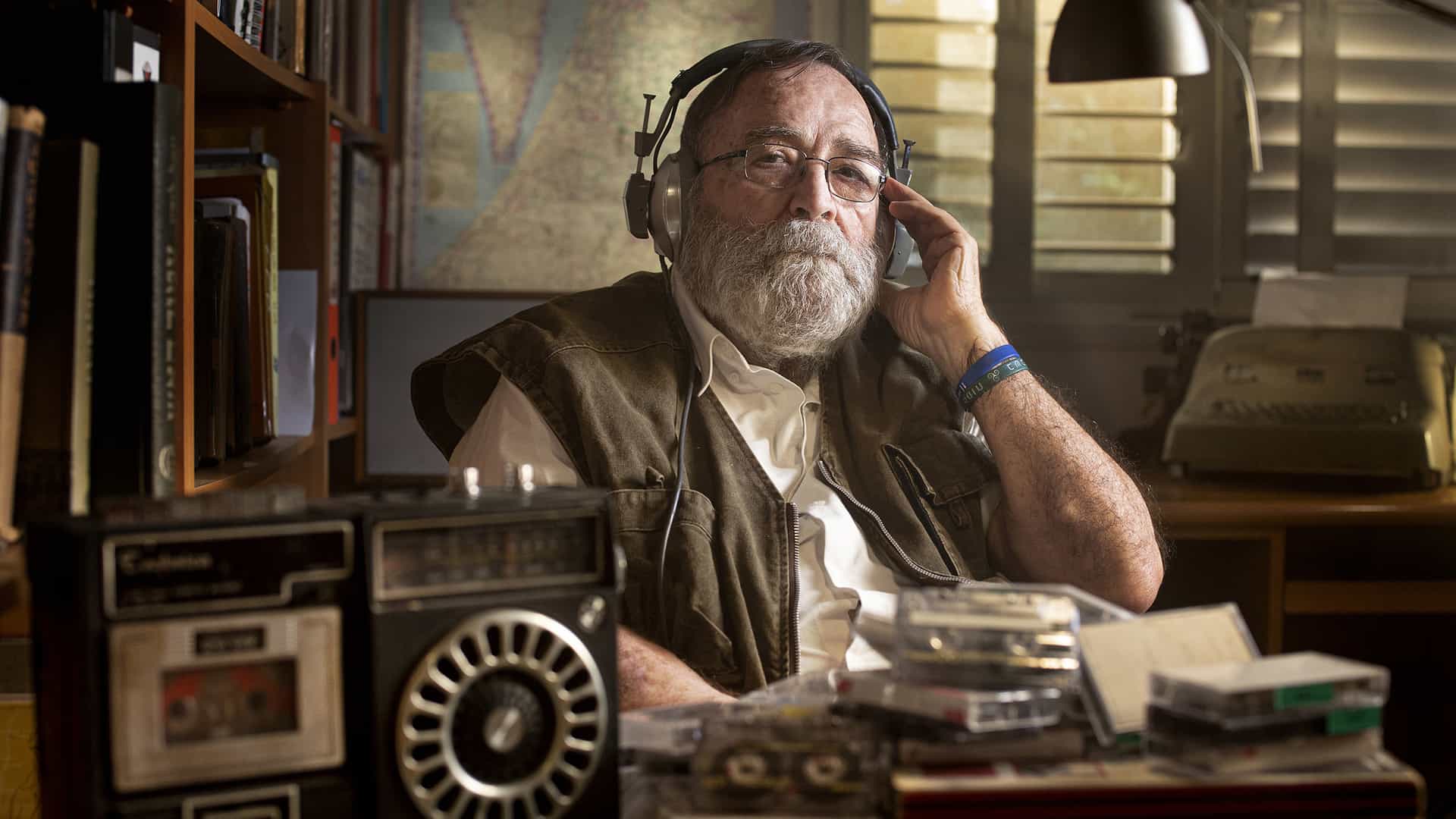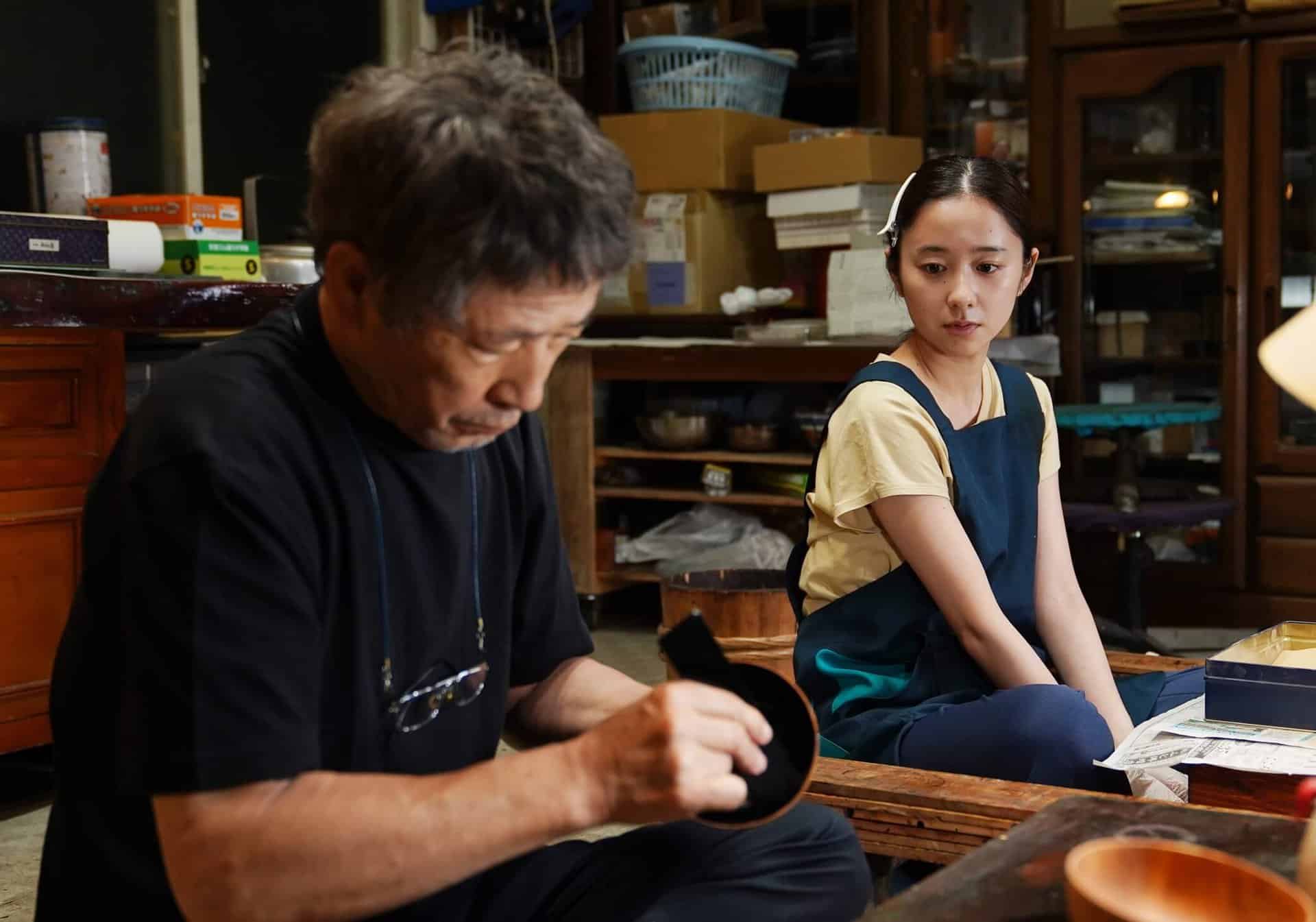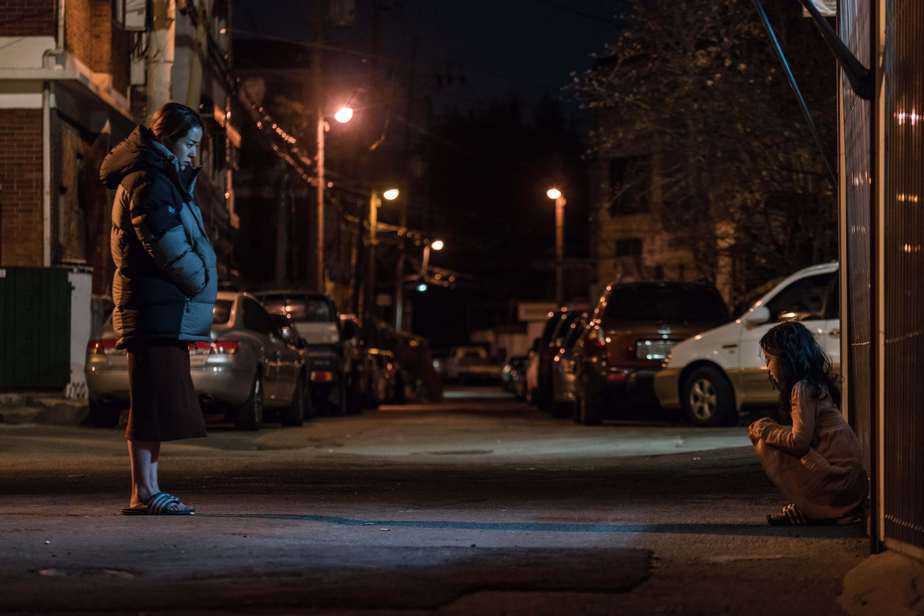Abashiri Prison is a famous prison in Japan that had spawned numerous films, books and video games featuring the location. One of it's inmates was Hajime Ito whose novel Abashiri Bangaichi would form the basis of the feature reviewed here. With Eureka Entertainment bringing the first three of the lengthy series to blu ray it's time to look back at a launchpad for several prominent careers.
Buy This Title
on Terracotta by clicking on the image below
A young Yakuza (Ken Takakura) is sent to prison following an attack on a rival gangster. After an incident results in his solitary confinement, he resolves to be a model prisoner and serve his time. He ignores several efforts of other prisoners to get him to join their escape. Fellow inmate Honda (Koji Nanbara) refuses to let go and ultimately a combination of manipulation by Yoda (Toru Abe) and discovery of his mother's illness force his hand. Now both reluctant escapees have to survive not just the frozen wilderness and pursuit party but also each other.
Based on a novel of by Hajime Ito, the script was rewritten to become a reworking of “The Defiant Ones” a 1958 movie starring Tony Curtis and Sidney Poitier. The central core of the original's racism theme was replaced with a clash of criminal personalities and onda's unrepentant lawlessness contrasted with Tachibana's Yakuza code of conduct.
When released in 1965, the feature was still largely portraying Yakuza characters as honorable men following a code of honor despite their criminality. In many respects, they were played like modern day successors to the samurai. An apt comparison would be the Chow Yun-fat triad roles in John Woo's “Heroic Bloodshed”. It wasn't until the 1970's when Kenji Fukasaku would reinvent the genre to what we recognize today with a more vicious brutal style. Ironically, the basis of the “Battles without Honour and Humanity” would stem from the memoirs of Kozo Mino who was another resident of the prison itself.
For Ken Takakura, “Abashiri Prison” was a breakout role. His Tachibana is a stoic figure living with his own code of honor. Intermittent flashbacks provide context and depth to his position. Like many in post war Japan poverty caused him to turn to crime, which we gradually see here. There is a streak of melodrama as we learn more of his situation. The increasing concern for the welfare of his mother drives up the tension as it's obvious that a jailbreak is looming. The stoicism gradually ebbs to desperation as parole is sought. Takakura would go on to play the role a further 15 times to gradual diminishing returns as inevitably the features became more formulaic.
Koji Nanbara gets the more showy performance as Gondo. He's a bad guy and makes no apologies for it, be it teasing his fellow inmates about his sexual conquests or deliberately targeting a particular to ensure Tachibana has no choice but to follow him in the escape. His edgy manner makes for an excellent contrast to his more stoic, reluctant companion.
The final third is the inevitable escape and where there is a deliberate reference to “The Defiant Ones” as Tachibana and Gonda flee whilst handcuffed to each other. Their antagonism drives the action which is undeniably thrilling. The rail car chase along the snowy tracks is excellent with tension added by the vengeful parole officer in pursuit.
Teruo Ishii would helm all of the initial wave of the Abashiri Prison series. Afterwards would become more widely known for his forays into the more exploitative world of cinema with such titles as “Shogun's Joy of Torture”. Here he demonstrates a good handle on the material. We get the standard prison movie tropes allied to more melodramatic elements. There is a streak of viciousness that foreshadows his later work, from Tachibana's solitary confinement arms handcuffed awkwardly behind him to the grim fate of some of the other escapees. The flashback sequences are excellently cut when moving back to present day. The black and white cinematography perfectly captures the bleakness and isolation of the location, adding another solid layer to the atmosphere.
“Abashiri Prison” is worth discovering. Move past the surface layer reworking of “The Defiant Ones” and you get an atmospheric, bleak take on human condition. Ken Takakura holds his own against a showy co-star and strong visual setting. The final reel is exciting and it never feels like a sentence watching it.














